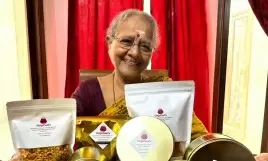Facebook, Twitter, and You Tube have become partners in news service

04-May-2011
Vol 2 | Issue 17
It is undisputed that the social media, unlike newspapers, radio, telephone and television makes many-to-many communication possible. And therefore, it is more democratic.
Since social media enables many-to-many, which is a radical shift from the traditional one-to-many, a relevant piece of information or story has the potential to be circulated ‘virally’ by thousands of connectors.
With 500 million active Facebook users and 75 million (as of Jan 2010) Twitter users, with liking, un-liking, friending, tweeting, re-tweeting etc become part of everyday lingo, the conventional media giants have no option but to ask their readers, listeners, and viewers to ‘follow’ them on Facebook and Twitter. They are all gearing for the eventuality that the future eyeballs will all be on computer screens and smart phones and tablets. They realize that ‘mainstream’ media, as we understood that word till 10 years back, is dead or nearly dead.
.webp) |
|
Grassroots content: Video Volunteers works with Community Correspondents across India who provide news from within their communities
|
The future is and should be what the industry calls ‘user generated content’ or ‘consumer generated media’ and what I call ‘community created content’. The community video producers, the community journalists and community radio reporters I am working with are doing just that. They are radicalized individuals rooted in their communities, not fearful of questioning the established powers, challenging norms, revealing uncomfortable facts, not afraid of putting their hearts out, with cameras and recorders, sharing their stories of triumph and loss, and inspiring us to take action for a better world.
The key to conflict resolution and peace building, I believe, is listening, and not, contrary to popular belief, talking. What Facebook offers is a ready group of ‘friends’ and ‘likers’ who we may perceive to be listening to us. Our posts and tweets being commented on or re-tweeted, or our status being liked, or we being poked, gives us a sense of belonging and being cared for.
Social media is also playing a crucial role in organizing and sometimes strategizing, and definitely a greater role in publicizing and galvanizing people’s movements.
Facebook, Twitter and YouTube did just that in Egypt. According to one Cairo activist : “We use Facebook to schedule the protests, Twitter to coordinate, and YouTube to tell the world.”
However, we need to be acutely aware of the fact that access to this powerful and apparently democratic social media needs large amounts of investment in fiber optic cables, satellites, transponders, antennas, servers, technologists, software, steel and land.
Throughout the first, second and third world, these investments are largely made by private corporations supported and facilitated by their respective governments. And since this is the case, profit remains at the center of such endeavors, and the purpose and objective is not to foster protest or social movements.
The corporations and governments only invest in technology where it suits its needs and agendas. Therefore, it is not surprising that Egypt shut down Internet access for a week during the recent revolution and China has the most stringent control over Internet access in the world.
In India, the lack of access or the digital divide is the result of general poverty and the traditional rich-poor, urban-rural divide. India has more than 790 million cell phone subscribers as of Feb 2011 but only 100 million internet users (only 11.4 million of those have access to broadband).
Besides, India is largely a 2G-country, which makes internet access over mobile phones painfully slow - not to mention hurtfully expensive. So, it will be a long time before more than 800 million people in India can drag themselves out of the internet black hole.
Stalin K heads Video Volunteers, an international media and human rights organization and is based in Goa
















